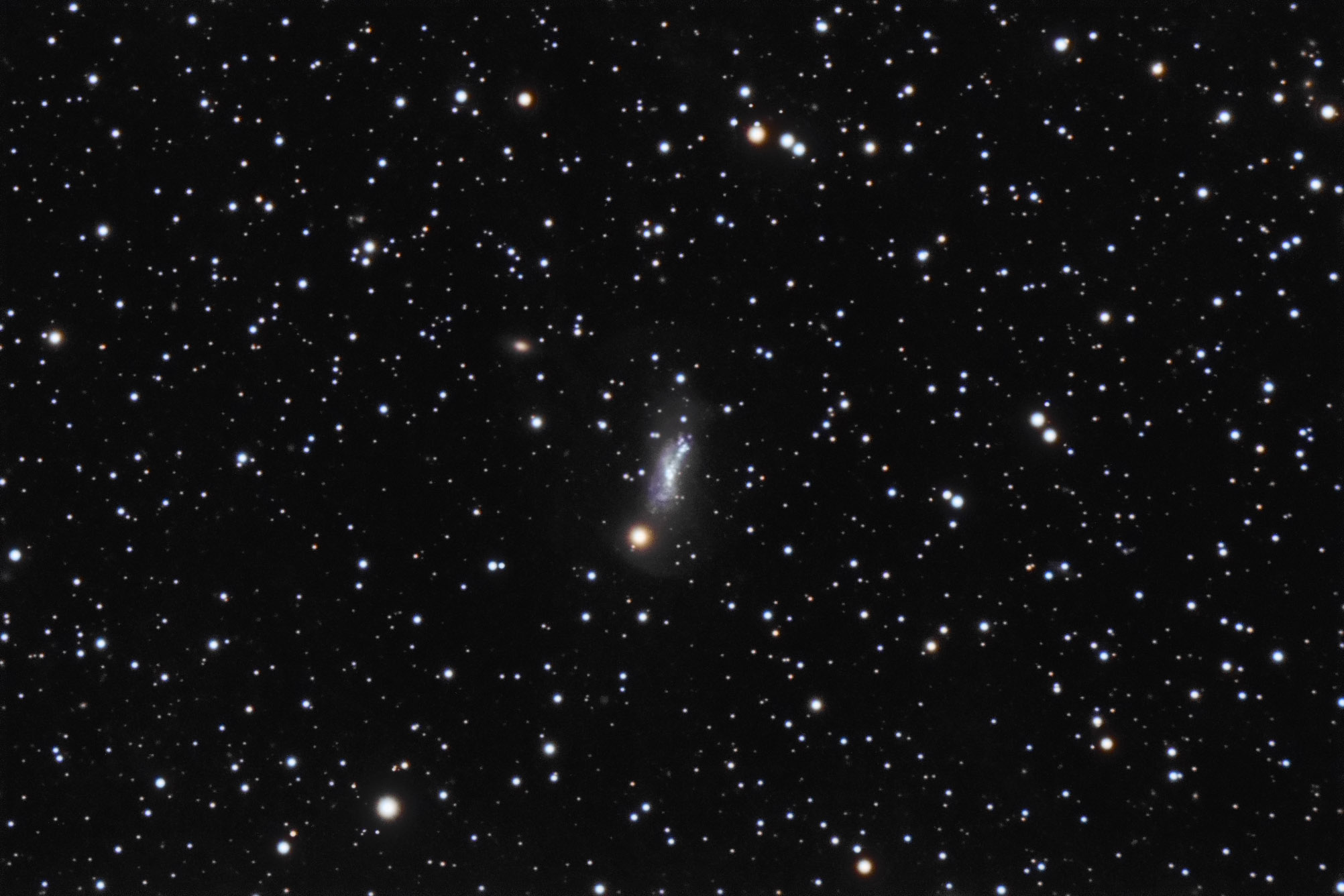| Description | Images |
Object name: NGC7250Designation(s): NGC7250, NGC 7250 is considered to be a merging pair of galaxies. Seems worthy of Arp's list but wasn't included. It is in the constellation of Lacerta about 40 to 45 million light-years distant. It is somewhat obscured by our galaxy's dust. Even with 12 subs, the faint outer regions were just that, faint. It must be a lovely sight without the dust. It is classed as S-irr by the NGC project and Sdm? at NED. It is a starburst galaxy which isn't surprising for a recent galaxy merger. Still, it appears rather small in angular size. So small I imaged it at 0.5" per pixel and it still isn't very big. One note indicates the brightest star-like object to the northwest (upper right) of the core about 24 seconds of arc from the center is a "companion". Do they mean the remains of the merging galaxy? For such an interesting galaxy I found very little on it. Probably because it is nearly impossible to separate the signature of features of its spectrum, radio and visual, from those of the Milky Way itself. This is often the case with galaxies seen this close to the galactic plane. I suppose the galaxy would be much bluer if not for the galactic extinction as well. It was discovered by William Herschel on November 8, 1790. It isn't in either H400 program. Related Designation(s):2MASS J22181782+4033442, 2MASX J22181777+4033446, 2MASXi J2218177+403343, AKARI J2218178+403350, CGCG 2216.1+4019, CGCG 530-022, IRAS 22161+4018, IRAS F22161+4018, ISOSS J22183+4034, MCG +07-45-024, MRK 0907, NGC 7250, NGC7250, NSA 149714, NVSS J221817+403349, PGC 068535, UGC 11980, UZC J221817.8+403346, [BTW2003] J2218+4029, [MGD2014] 2216.1+4018, [SLK2004] 1770, |
